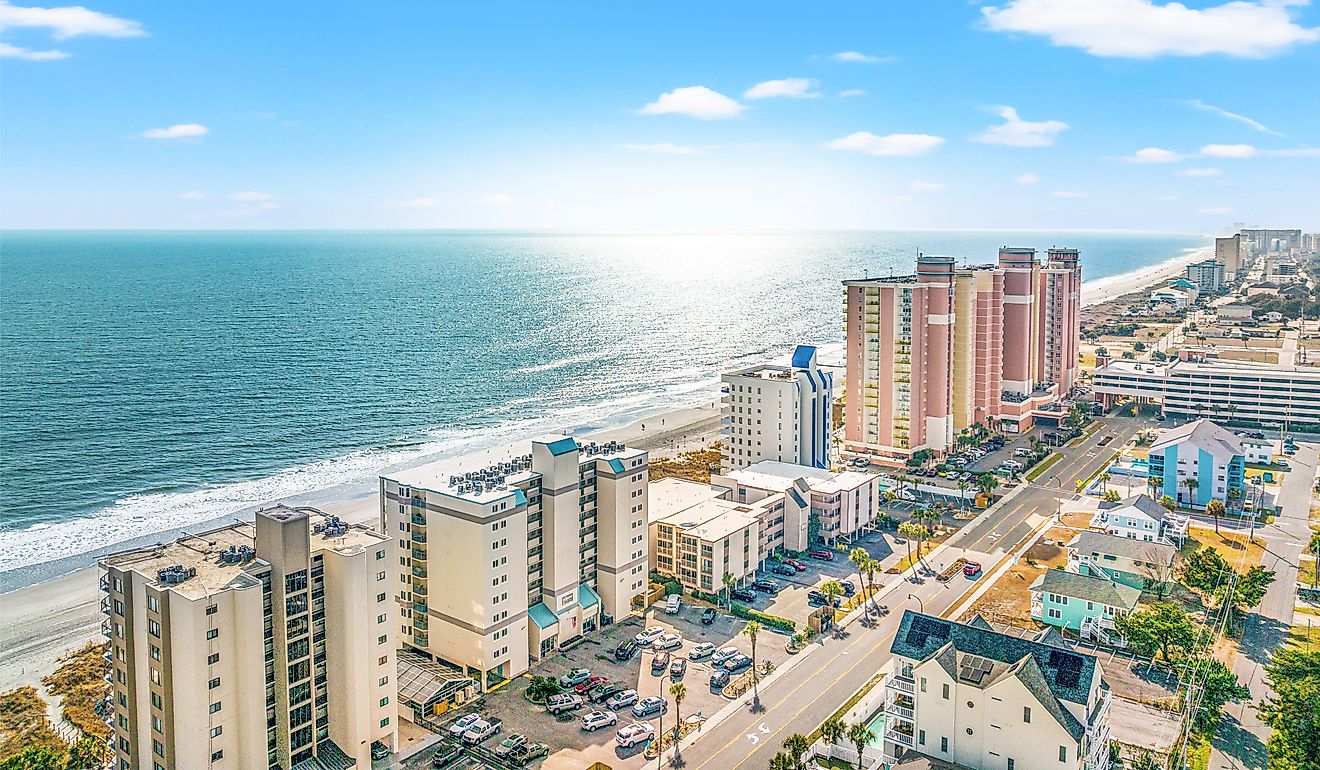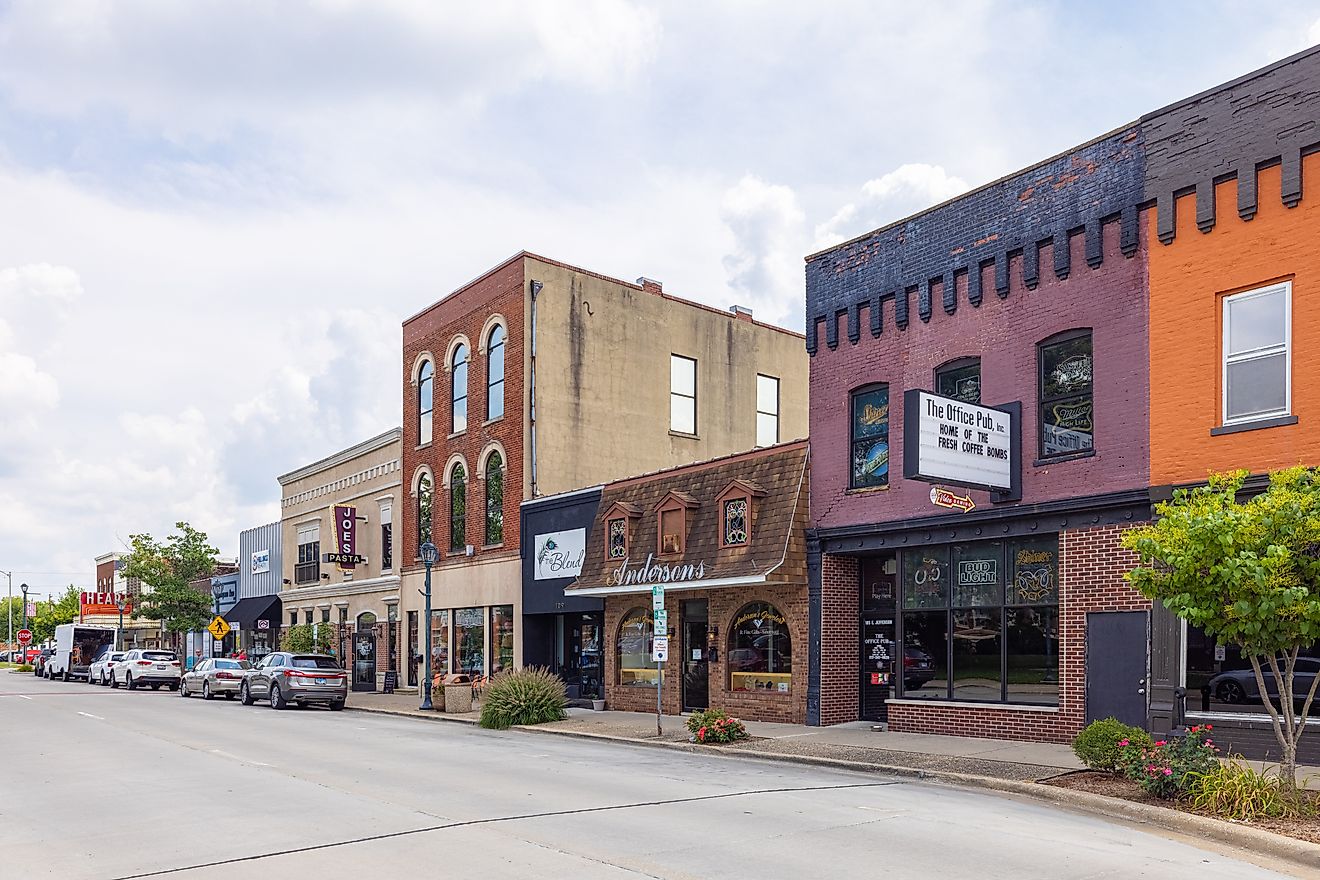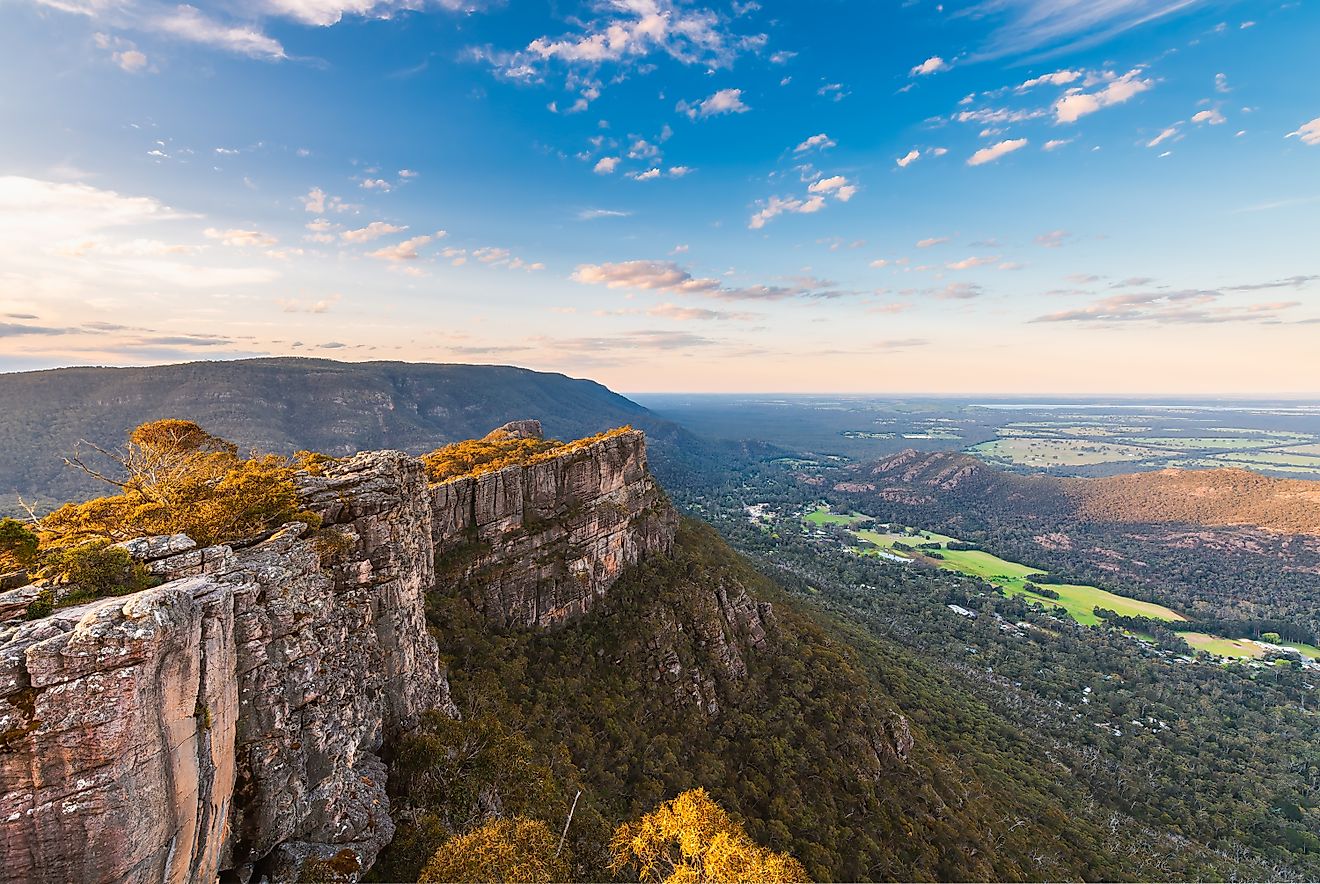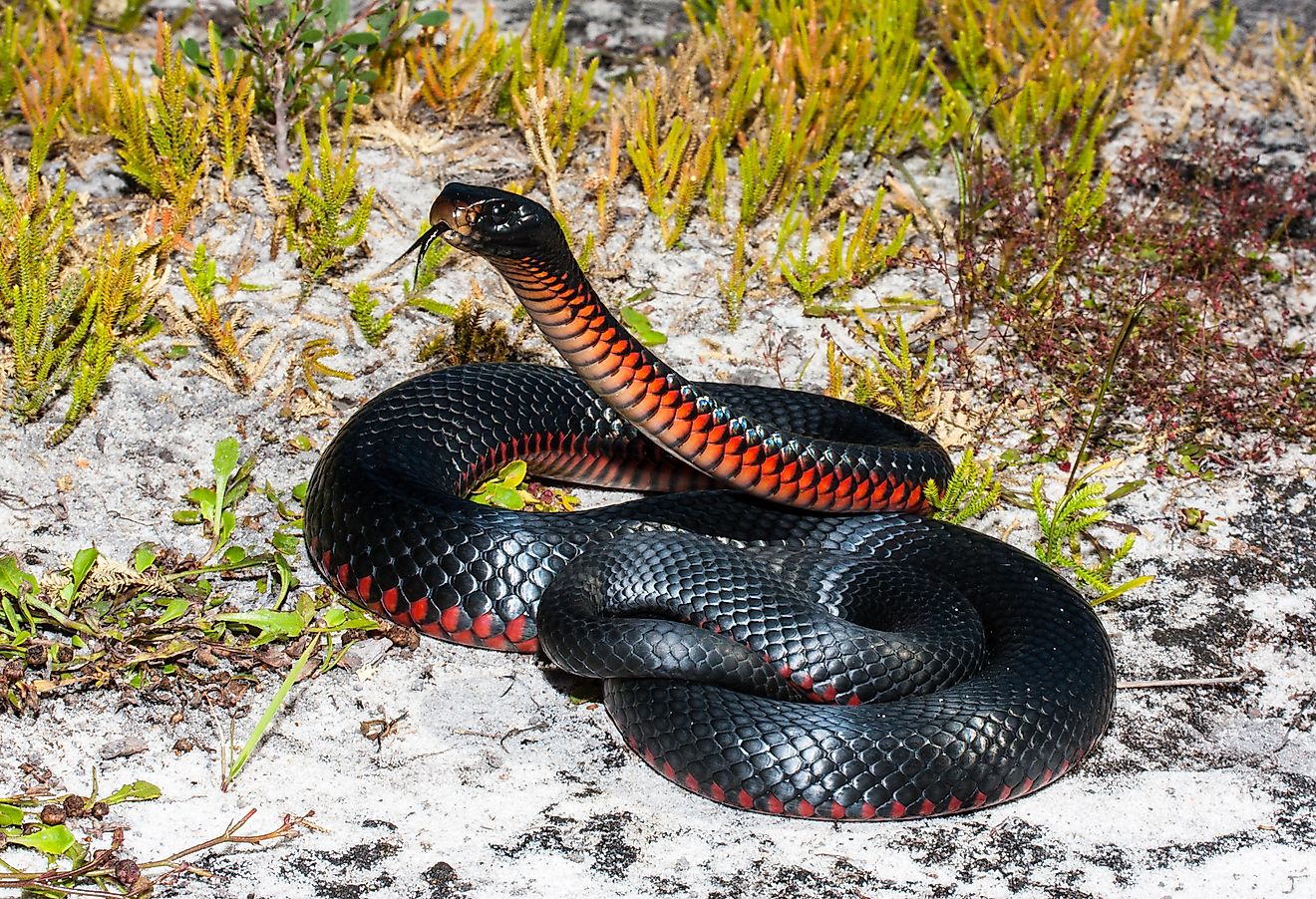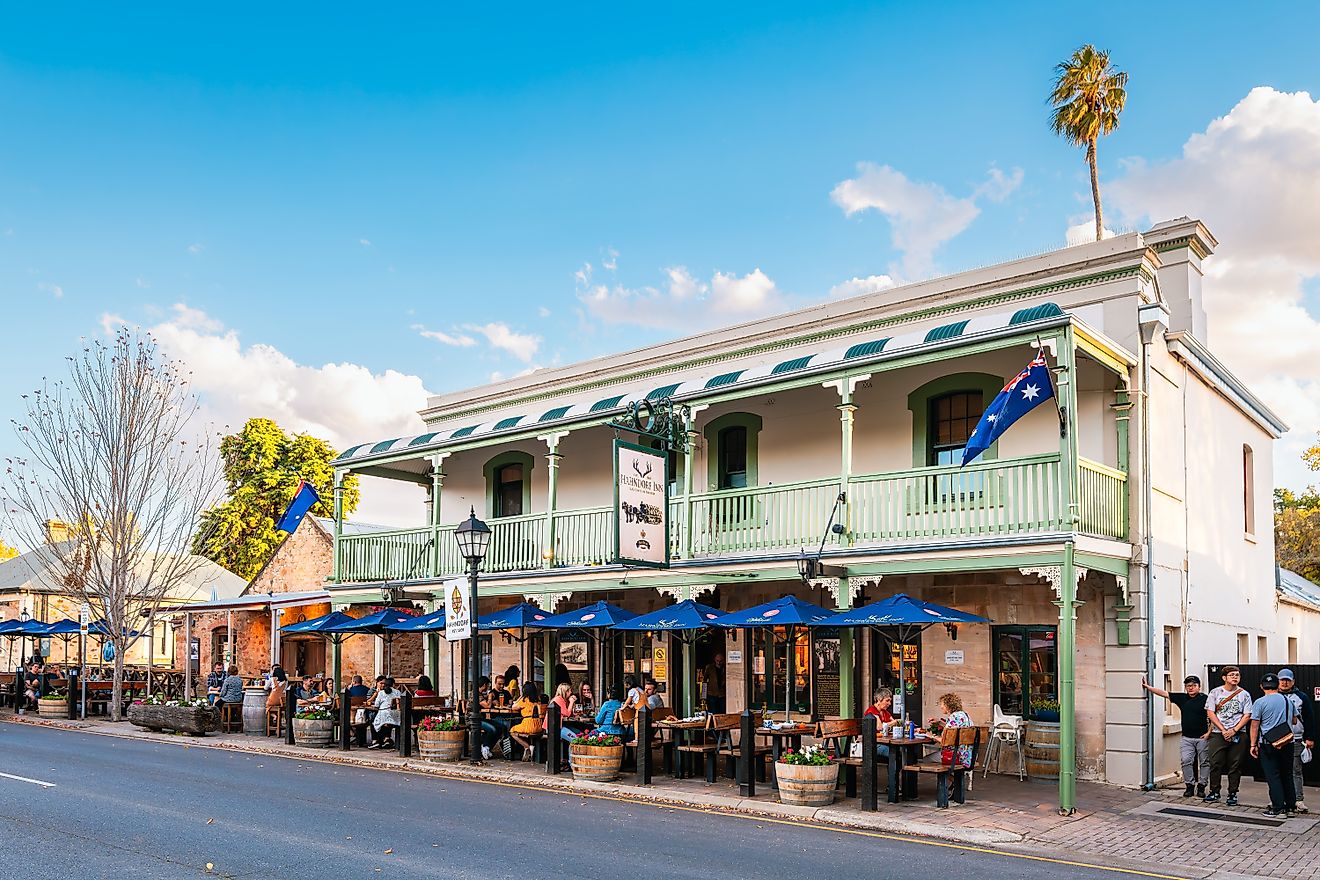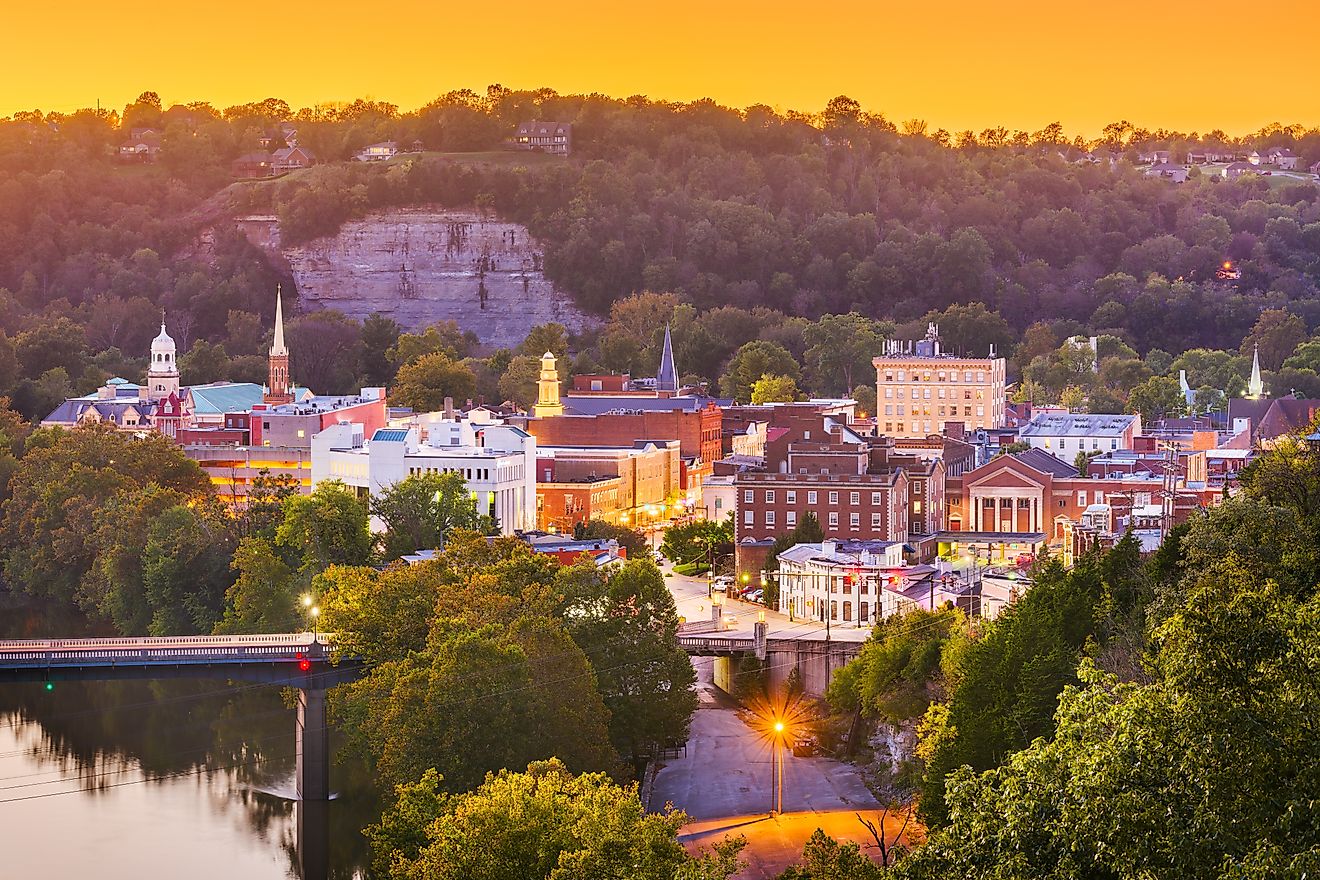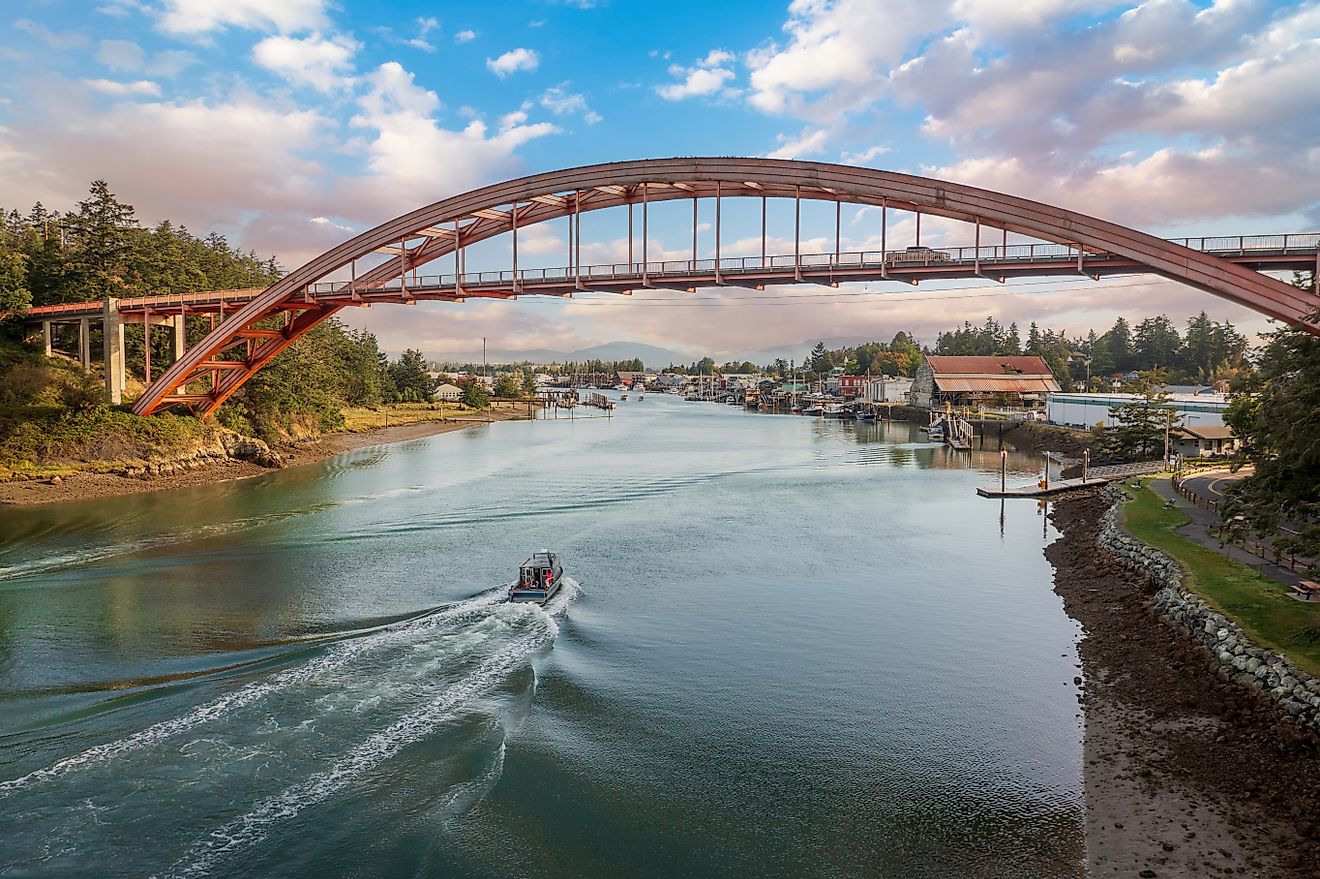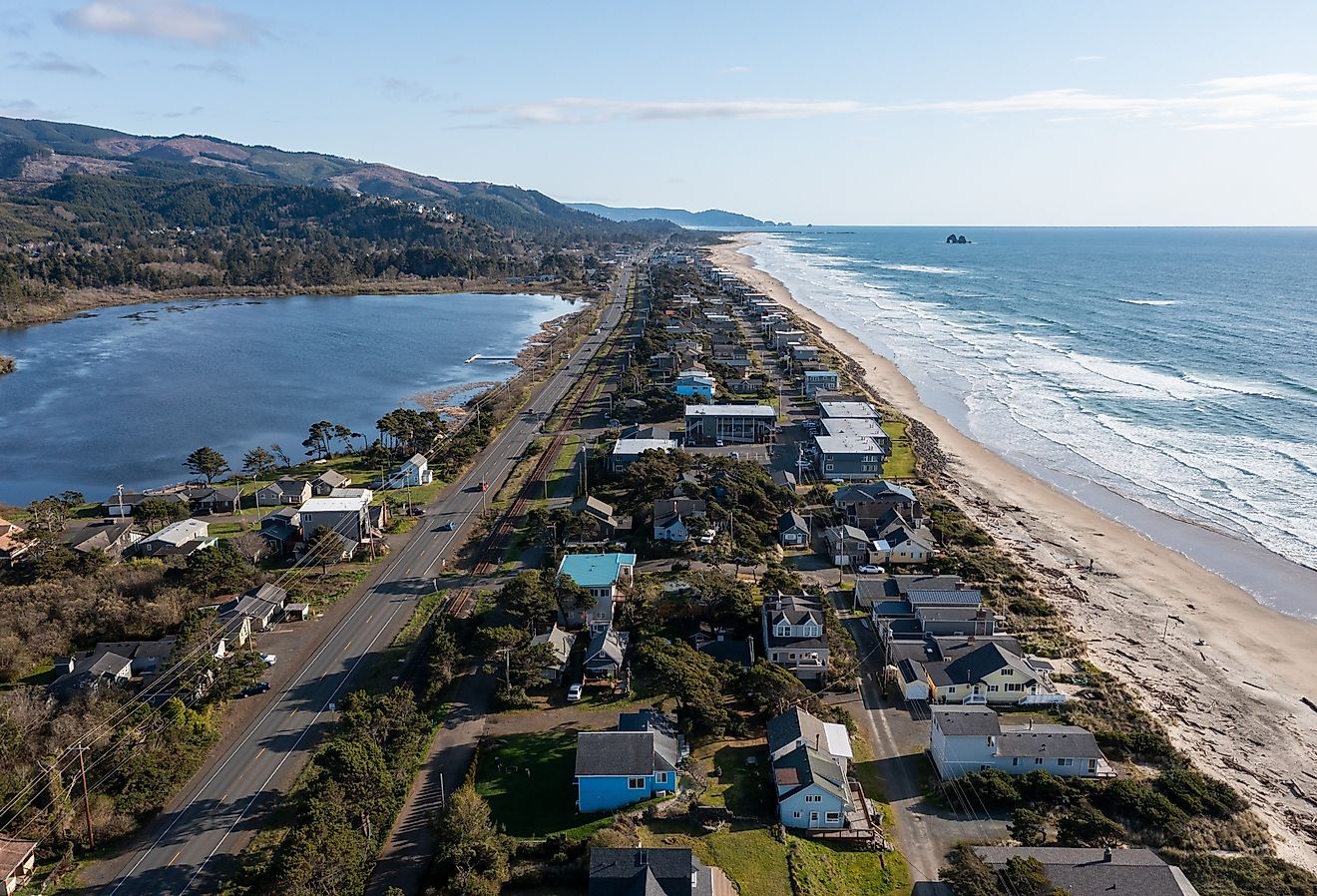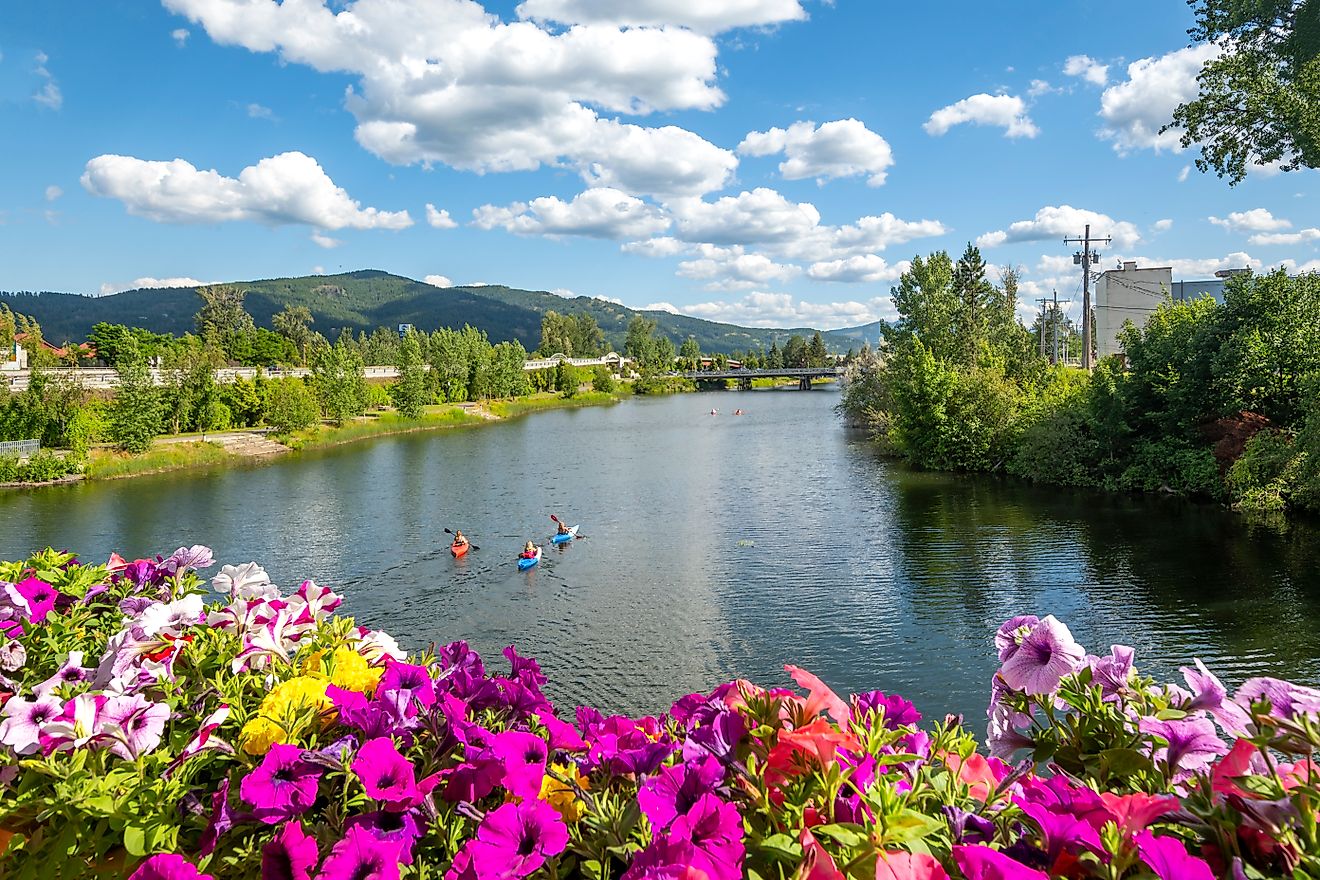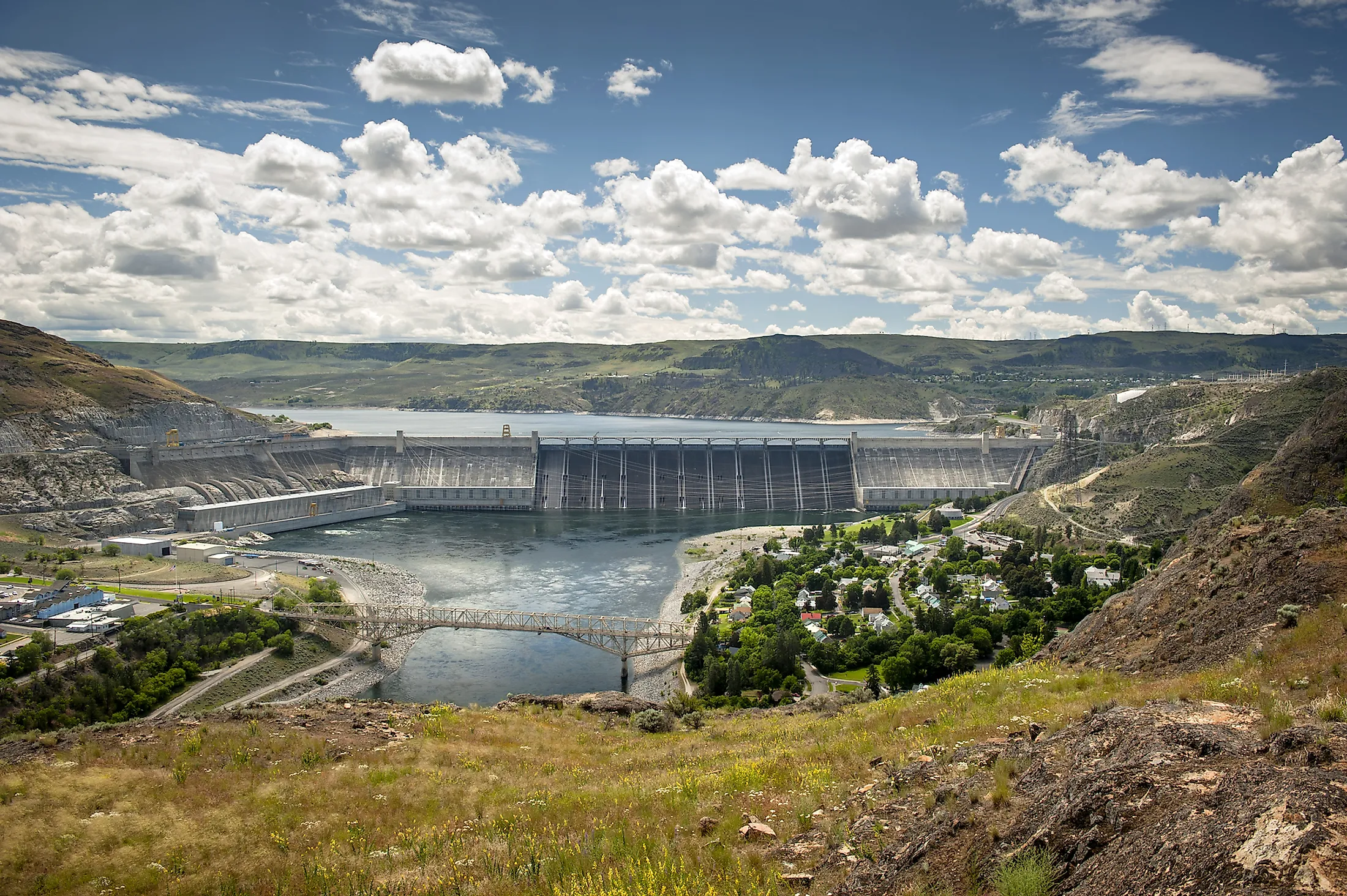
Grand Coulee Dam
Grand Coulee Dam is a huge concrete gravity dam that spans the Columbia River about 145km to the northwest of the city of Spokane in Washington, United States. The dam is considered to be the US Bureau of Reclamation’s largest multipurpose project that was constructed to support irrigation, navigation, control floods, and generate hydroelectric power. The Grand Coulee Dam at present contains three principal hydroelectric power generating plants and a pump generating plant. From 1974 onwards, the Grand Coulee Dam has been the United States’ largest hydropower generating complex, which has an installed capacity of 6,809MW. The American Society of Civil Engineers designated the Grand Coulee Dam as one of the National Historic Civil Engineering Landmarks.
About the Dam
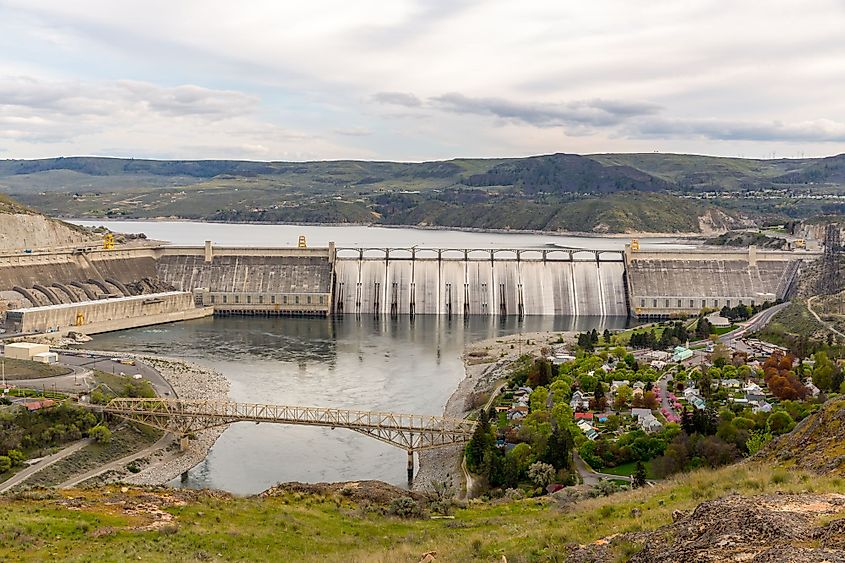
The Grand Coulee Dam is the largest and the most complex among all the dams that have been constructed on the Columbia River. The dam has a height of 168m and a length of 1,592m. The crest of the dam has a maximum width of 9m, while the base of the dam has a maximum width of 152m. The dam contains about 9,155,944 cubic meters of concrete and more than 10 million pounds of steel, 77 million pounds of reinforcing steel and 12 million barrels of cement have been used to construct the dam. The spillway of the Grand Coulee Dam is controlled by 11 drum gates that have a length of 41.15m and a height of 6.096m. The spillway has a crest elevation of 384.05m, a top elevation of 392.56m, and a discharge capacity of 28,317 cubic meters per second.
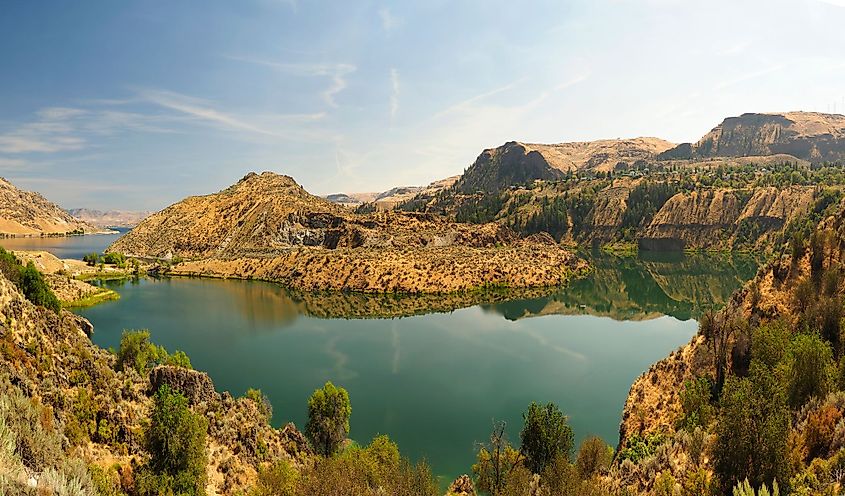
The Grand Coulee Dam led to the creation of a reservoir referred to as Franklin Delano Roosevelt Lake. The lake covers an area of 324 sq. km and stretches for more than 240km from the dam to the international boundary between Canada and United States. The Franklin Delano Roosevelt Lake is considered to be Washington’s largest lake and reservoir by surface area and at present supports the Lake Roosevelt National Recreation Area. The reservoir with a shoreline of 970km, has a total capacity of 12 cubic kilometers and provides about 6 cubic kilometers of area for flood control. The Grand Coulee Dam receives water from the Franklin Delano Roosevelt Lake, which is pumped using a feeder canal into the Banks Lake, that serves as an equalizing reservoir. The Banks Lake was formed by constructing two earthfill dams – the North Dam and the Dry Falls Dam on either side of the Grand Coulee Dam. The Dry Falls Dam serves as the beginning point of the main canal from which the water is distributed to three connecting canals. The canals in turn supply water to various laterals and from there to the different parts of the US State of Washington for irrigation purposes. The Grand Coulee Dam along with the North Dam, the Dry Falls Dam, the Pinto and O’Sullivan Dams, and all the connecting canals form a part of the massive Columbia River Basin Project.
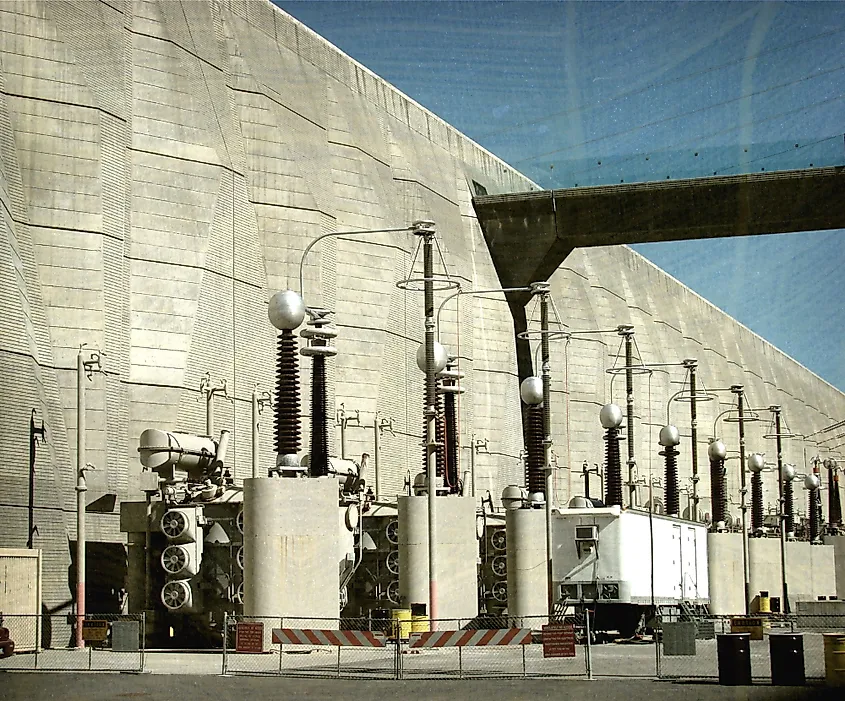
Currently, the Grand Coulee Dam contains four different powerhouses. The two initial power houses are referred to as the Left Powerhouse and Right Powerhouse, each of which has 9 large generators, that are split by a spillway that is 396.24m wide and covers an area of 0.054 sq. km. Among the two powerhouses, the Left Powerhouse has three additional service generators with a total capacity of 30MW in addition to 9 generators that have a total capacity of 1,125MW. Similarly, the 9 generators of the Right Powerhouse have a total capacity of 1,125MW. By 1950, All the 18 generators of the Grand Coulee Dam started their operations. However, to meet the growing demand for electricity after the Second World War, the construction authorities decided to build another power house at the Grand Coulee Dam. This Third Powerhouse contains a total of six large generators that have an installed capacity of 4,215MW. Of this, the first 3 generators have a total capacity of 1800MW and the next 3 generators have a total capacity of 2,415MW. The Pump-Generating Plant of the Grand Coulee Dam contains 6 peak generators that have an installed capacity of 314MW. Of this, the first 4 generators have a total capacity of 214MW and the next 2 generators have a total capacity of 100MW. Therefore, the overall maximum capacity of the Grand Coulee Dam is about 6,809MW.
Environmental Impacts
The construction of the Grand Coulee Dam had serious implications on the indigenous Native American tribes. More than 85 sq. km of land area where the Native Americans used to live for thousands of years were flooded as a result of the dam’s construction. This led to the forceful relocation of the graveyards and settlements of the indigenous tribes. The Columbia River Basin Project also seriously affected the habitat ranges of several species including burrowing owls, mule deer, pygmy rabbits, etc. Moreover, the Grand Coulee Dam lacked fish ladders and therefore it permanently blocked the migration of fishes leading to the removal of over 1,770km of their natural spawning habitat. The dam blocked the access of several fishes including salmon, steelhead, sockeye, and several other fishes. This removal of the spawning grounds from upstream of the Grand Coulee Dam also prevented the native tribes from performing the first salmon ceremony.
Brief History
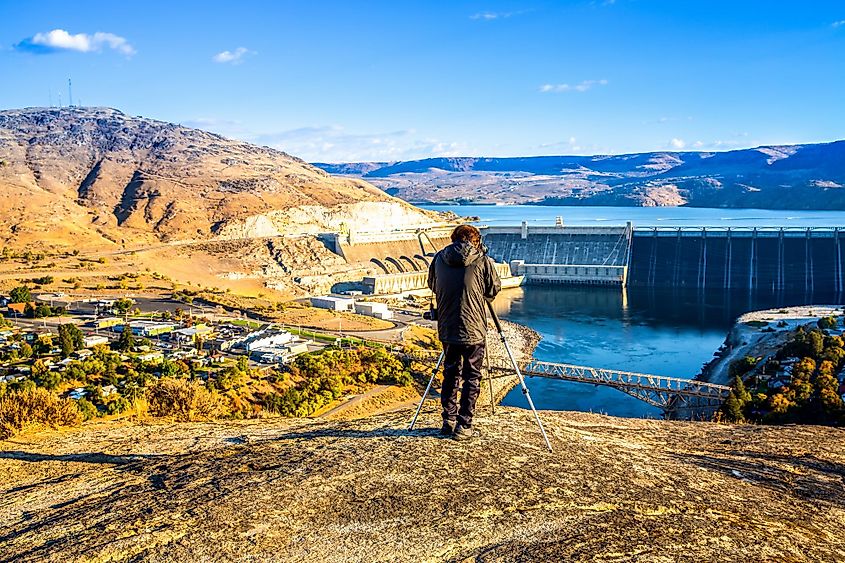
The name of the dam “Grand Coulee” actually refers to a unique geological feature that was created by the retreating floods and glaciers during the Pliocene Epoch. The Grand Coulee, therefore, served as a perfect location for building a dam, and the earliest officially recorded proposal for constructing a dam here dates back to 1892. The United States Bureau of Reclamation was authorized under the Reclamation Act of 1902 to take up large-scale irrigation projects in the West. In 1914, an attempt to raise funds for the irrigation failed, as the voters of Washington State had rejected the $40 million bond. In 1926, the US Congress sanctioned $6 million for a comprehensive study to irrigate, control floods and generate hydroelectric power from the Columbia and the Snake Rivers. The US Army Corps of Engineers gave the Columbia River Report in 1929 that recommended the construction of 10 dams on the Columbia River. The report also favored the construction of a dam at Grand Coulee that would deliver water for irrigation purposes. In 1933, after Franklin D. Roosevelt became the US President, he included the Grand Coulee as a part of his New Deal construction projects.
Initially, due to budgetary constraints, the Grand Coulee Dam was built as a low dam that had a height of 88m. The construction of the dam began on July 16, 1933, and the US Bureau of Reclamation began to work on the dam’s construction along with a consortium of three companies – Mason, Walsh, and Atkinson Kier Company (MWAK). On August 4, 1934, after President Roosevelt visited the construction site and was strongly impressed by the purpose and progress of the project, he allowed the construction of a 168m high dam. After the change in the dam’s design, the construction team was joined by Six Companies, Inc and its chief construction engineer Frank A. Banks. Under the River and Harbors Act of 1935, the US Congress sanctioned funds for the construction of the Grand Coulee Dam. The dam’s primary generators started operating in January 1941 and the construction for the dam’s irrigation facilities was finally approved in 1943. The Grand Coulee Dam played a very important role during the Second World War, as the electrical power that was generated by the dam, played a crucial role in producing aluminum for war machinery.


